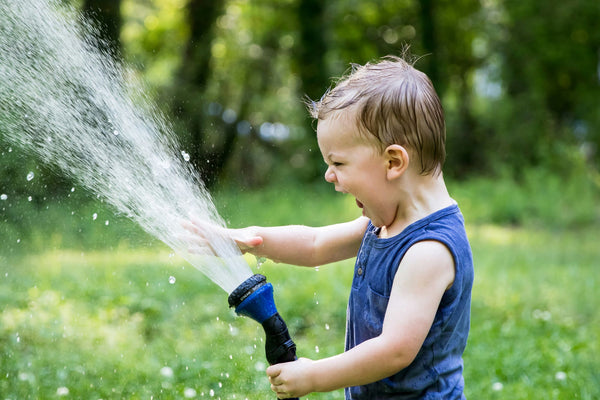WELCOME TO OUR STORE
How to Talk to Your Kids About Safety Without Scaring Them


As parents, our top priority is for our kids to be safe and experience joy. We strive to shield them from harm and impart child safety knowledge that helps them steer clear of danger. However, our protective guidance can sometimes backfire. Instead of fostering a sense of security, our warnings may inadvertently heighten their anxiety and fear.
Adopting a positive and constructive approach to personal safety talks can make a significant difference. By shifting the focus from prohibitions to proactive behaviors, we encourage children to be safe through an open dialogue about what actions are beneficial, what signs to look for, and how to grow their confidence rather than fear.
Here are some reimagined ways to convey safety teaching messages in a more uplifting and helpful manner:

Transform the classic warning 'Don't talk to strangers' into a proactive safety rule: 'If you need assistance, look for a teacher, police officer, or another trusted adult.' This reframing helps children identify safe individuals to approach when in need.
Shifting the focus from 'stranger danger' to identifying and approaching trusted adults, this approach aims to provide children with practical strategies for seeking help, instead of instilling a generalized fear of strangers.
Instead of the vague admonition 'Be careful,' opt for specific guidance that promotes safety rules: 'Take your time and stay alert to your surroundings.' This advice helps children understand how to be safe by focusing on careful and mindful actions.
By adopting safety rules in your approach, you're not causing your children to feel nervous or anxious; rather, you're inspiring them to be safe, attentive, and concentrated. Furthermore, you're aiding their development in problem-solving and decision-making skills.

Rather than saying 'That’s too dangerous,' you might guide them with: 'Let’s find a safer way to do that,' thus teaching them to distinguish between safe and unsafe scenarios.
You are fostering a collaborative and innovative mindset in your children, teaching them to prioritize safety without discouraging or restricting them. Moreover, you are nurturing their creativity while also emphasizing the importance of safety.
Instead of 'Don’t touch that!,' you might say: 'Let’s ask if it’s okay to touch that,' teaching them about boundaries and how to be safe in an engaging manner.
By doing so, you are nurturing their natural curiosity and honoring their innate desire to explore and learn. Additionally, you are teaching them the importance of seeking permission and adhering to rules, ensuring they know how to be safe.

Rather than 'Stay away from there,' you could say: 'Let’s explore a different area.'
This approach ensures that you are not making your kids feel bored or deprived, but rather broadening their horizons and experiences with flexibility and safety in mind. You are also demonstrating to them the value of being adaptable and how to be safe in various situations.
Instead of expressing 'That's scary,' you might suggest: 'Let's find something else that feels more comfortable,' thereby addressing uncomfortable feelings while emphasizing the need to be safe.
You are not causing your children to feel ashamed or embarrassed; rather, you are validating their feelings and preferences. In doing so, you are guiding them in managing emotions and teaching them how to be safe while confronting their fears.

Utilizing positive and constructive language allows you to discuss personal safety with your kids without instilling fear. You can nurture a healthy sense of caution in them that doesn't stifle their curiosity and creativity. By doing so, you enable them to make informed choices and to trust their instincts, as well as to seek out trusted adults when necessary.
Keep in mind that to be safe is not solely about sidestepping risks, but also about embracing opportunities that lead to growth. Ensuring safety isn't just about preventing harm; it's equally about enhancing happiness and well-being. It's not just about the cautionary 'no,' but also about the affirmative 'yes' to new experiences.

